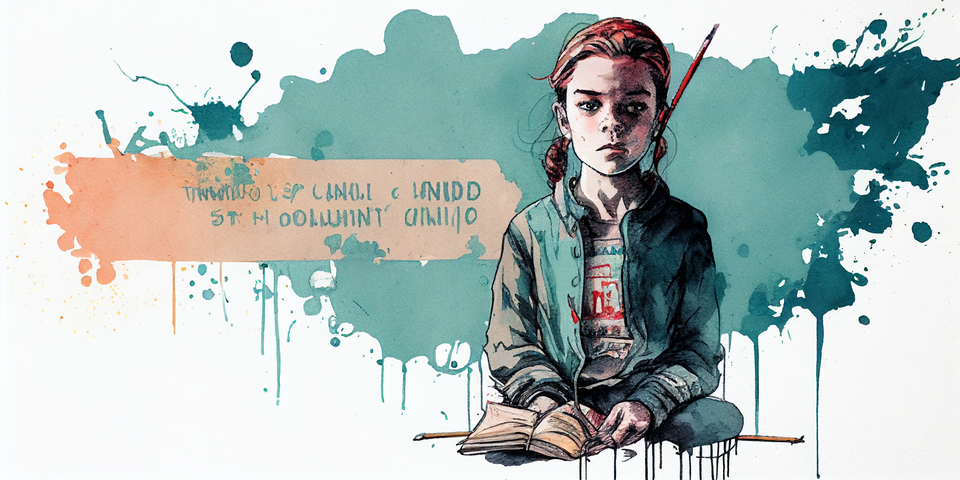AI in the Education Frontline

In New Zealand, the academic year kicks off at the end of January or the beginning of February. For this year, I've introduced a new course called AI, Robotics, and the Future for year 9 and 10 students (14 and 15 years old, respectively). The students provided feedback on their expectations and shared their ideas about AI. Additionally, I'm using AI as a learning tool in my other classes, such as Psychology (for 17-year-olds) and Earth Space Science & Physics (for 16-year-olds). I also conducted a workshop for the staff, who gave me valuable feedback on what's working for them as well as making them aware of use-case scenarios.
For this week's blog post, I'll share what's been successful, what needs improvement, and my plans following the first two weeks of term. Hopefully, this can benefit other educators who are facing similar challenges.
How Secondary Students View AI
ChatGPT was introduced towards the very end of the NZ Academic year, so it was unlikely to have made an impression on most students. Only those who were very tech-savvy would have tried it out. However, once its potential became clear, there were a lot of news reports in our national media (e.g. ChatGPT website: US schools block artificial intelligence writing tool - NZ Herald) about how it would lead to cheating and how it is being banned. This is an issue because:
a) it is deficit thinking- every school student does not automatically cheat if given the opportunity. [Note- there are situations where this is not correct, e.g. where the stakes are high, there are no checks in place to catch cheating etc.]
b) leads to others 'banning' the tools (even though this is unlikely to be effective).
c) it put into the minds of students who watched the potential of ChatGPT to be used for writing their work
When I met my classes this year, I did a non-scientific straw poll of my year 11 and 12 classes and found that around 25% had used ChatGPT (with most saying they had already used it to help write work submitted with other teachers!). As most teachers have not tried out AI yet, they are much less likely to recognise when a piece has been written by a student. Of course, it will be even less likely if you have only taught the students for a couple of weeks.
Not Cynical
One observation which was true for all of my classes was this:
The vast majority of students are optimistic about AI and using it for learning benefit (rather than for cheating).
With my Psychology class, I got them to use ChatGPT to create a timeline of the main events in Psychology - with dates and key figures. I tied this in with the different areas of Psychology (e.g. Psychodynamic, Cognitive, Behavioural etc.). Last year this took a while - the internet (well, Google) is very good at:
- Showing you advertising (of course Media Psychology applies here)
- Giving you hits that require a lot more reading
- Giving you too many options to encourage you to visit more sites, feeding the search engine and enabling Google to get a better picture of you.
Using ChatGPT led to lots of different timelines (depending upon how the prompt was phrased). It also had some content that had to be cross-referenced. AI is an unreliable narrator; as with any source (book, video, website), it needs to be double-checked.
When my learners were doing this activity, it became clear what AI text generation really is. It's like having your own personal Wikipedia page generated for you. As with Wikipedia, the information could be out of date or incorrect. Even a published book sometime has errors [I write books, and even with a text editor, series editor, plus tech reviewers, some slips still get through]. Unlike non-AI sources, you can not ask questions about the text. You can with AI. You can ask for it to be simplified, for clarification. You can enter the text from a published book and ask what it means. You can get AI to paraphrase the work for you. You can even get it to re-write the text as a pirate(!)

My students responded well to this - in the same way they have with learning how not to plagiarise. Stopping plagiarism is a learned skill. Just because something is plagiarised doesn't mean it was deliberately done to deceive (deficit thinking there, again). We need to do the same with AI - actively teach how to use it.
Reducing Admin
One immediate benefit of holding a workshop for staff wanting to try out ChatGPT was that it enabled some live ChatGPT use. This was directly relevant to the staff and proved very successful. I recommend that staff in schools do this every once in a while. It's a safe space and can generate new uses.

In my latest session, a teacher had to write a character reference for a student the next day. We typed a prompt with plenty of phrases the teacher normally used, and then, 20 s later, we had a well-written letter. This would have taken the teacher ages - the time saved was considerable. It also was still personal, there is nothing wrong with writing a letter in this way. This is particularly true if you are not great at writing references! We still need to check what it has written and change how it says things, but it is a definite time-saver.
Teaching AI Directly as a Course
As I said at the beginning of this post, I've introduced a course, AI, Robotics and the Future to year 9 and 10 classes. [Note: Subscribers can read an overview of the scheme in the email version of this post].
I am teaching the year 9 class, which comes with its own challenges. The class is for a start too big (31 students), and the students have all only just started secondary school - with all the issue that comes with that (making friends, navigating a new school etc.). Nevertheless, most students have fed back to me that they are excited about learning how to use AI and are enjoying the lessons so far. We have been looking AI and art, using Dalle-2 and MidJourney.
We have had sign-up issues due to OpenAI recognising that many students are signing up from a single location. So, I recommend that if you are going to get students using AI in class, get them to sign up for the relevant AI from home first. Those that do sign up from home have had no access issues.
When the students have created images, I have had them download them and then copy and paste them into OneNote (the same would work with Google Classroom or any other ecosystem). I also ask them to paste the prompt. This is good practice, both with referencing ChatGPT and with Art AIs.
It is also a good way to teach some literacy skills - it is definitely a skill to get AI art generators to create what you have in mind!
I will move on to Text generation later this week with the class, so we will see how they handle that.
An Augmented Intelligence
My youngest daughter is in year 10. Sometimes, she has not understood what the teacher has explained. A week ago, I showed her ChatGPT and said that she could ask it questions to help ensure she understood the tasks in class. On the way to piano today, she told me she had done this in class for the first time. I was impressed that she had taken that idea and run with it. I thought I would share it here to show how powerful AI can be with young learners.
In her maths class, the teacher told the students to create box plots. Now, my daughter and others did not know what that meant, other than looking at the image on the screen. This may have been intentional - it could be that the teacher thought the class could work out how to do it themselves, of course. It could also have been my daughter not listening correctly, either way, she did not know how to move on. She could have used Google (but we are well aware of distractions and how it may not have explained what she needed). Instead she asked ChatGPT whether it could explain what a box plot was.
She read the information it provided, recognised words to do with statistics, and then asked it to explain how to draw a box plot. It went through a method for her. She told me she was still confused, so asked it to rewrite what it had told her, but this time for a younger child. That did the trick, and she was then able to explain to other students at her table how to do it. She then fed in an example question, saw how it was done, and then had no trouble with the other questions. She felt pleased that she knew about something that she had not at the start of the lesson. She also felt proud that she'd got ChatGPT to explain to her what she needed to do.
Why is this important? All students in a class will have a unique interpretation of what is happening in the class, based on experience, how well they have listened, their current knowledge, their mood, how tired they are etc. The teacher cannot cover every student individually- having students use ChatGPT to self-solve understanding issues releases the teacher. It enables them to assist those who may be further behind, or they can extend students further. Although 1:1 teacher-student ratios are desirable, this is not possible. ChatGPT can help with this. ChatGPT enables true differentiation.
ChatGPT enables true differentiation

What next?
I hope this post gets you thinking of positive uses for AI and you can try it out for yourself. I've just got access to Bing AI, which brings in the ability to have AI and web searches together. I will investigate and report on how effective this is, along with the AI that has been added into Word and PowerBI. Why not have a go with these yourself?
Until next time....
Eliot